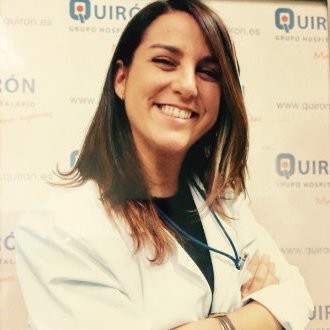My Treatment in Spain: 5 FAQs
Making the decision to go abroad for assisted reproduction treatment is not easy for anyone. The reasons can vary: perhaps because of the facilities offered by countries like Spain, or maybe it’s because one has already endured a long, tough, and unsuccessful journey of assisted reproduction. Regardless of the reason, people facing this situation are confronted with the difficulty of fertility treatment itself, with the daunting prospect of traveling to an unfamiliar country, dealing with a different language, and juggling everything with their personal and professional lives.
The key is to feel confident in the team that will take care of you and to be at ease with the chosen treatment. However, understanding how to better organize day-to-day life significantly reduces stress, and this is something I always try to clarify in my initial meetings with my patients. And even though it might seem impossible, it’s not! In this post, you will find answers to the questions that are most frequently asked in my consultations on this topic.

How many trips will I have to make?
To start, my advice is usually to try to minimize travel as much as possible. Each trip brings stress, cost, and disruption to our daily lives. Nowadays, many things can be done remotely, starting with consultations, so make the most of it.
Ideally, all tests and initial consultations with the doctor should be done from your place of residence, and you should only travel for the actual treatment. Nowadays, clinics offer video conference appointments and provide lists of necessary tests that can be done nearby, without the need to travel.
Only if there is no access to such diagnostic tests or if they are very expensive in your home country, an initial trip for a first consultation and a battery of exams might be necessary.
The number of trips and their duration will depend on the prescribed treatment
The number of trips and their duration will depend on the prescribed treatment and the sensitivity of the team taking care of you. Often, doctors tend to treat all patients the same way (even though many of us try to avoid it!) and overlook the fact that a treatment strategy cannot be designed in the same way for an international patient (who lives hundreds or thousands of kilometers away) as for a local patient (who can travel to the clinic in 10-20 minutes time). The same treatment can be done in one or two trips or in three, four, or five if the medical team is not attentive. But don’t worry, it’s perfectly feasible to undergo the treatment in one or two short trips! Especially if it is organized with care and you can travel relatively quickly and efficiently (there are available flights, cars, trains, etc.).
If you are coming from a distant country, with limited air connections or visa difficulties for entering and exiting, the advice is to come once but for a longer period to have time for follow-up and treatment without rush.
How many trips are needed for an IVF treatment in Spain?
How long will I have to stay there?
If you are coming from a nearby and well-connected country, trips will be between 2 and 7 days.
Assisted reproduction treatments last at least 2 weeks, but can extend up to 6-8 weeks. As you can see, it is not necessary to spend the entire treatment period in Spain, except for exceptions. If you are not coming from very far away and can travel swiftly (flights, cars, trains available), you can organize most part of the treatment in your home country (ultrasounds, blood tests..) and come only for the medical procedures: the day of insemination, ovarian puncture, or embryo transfer.
In these cases, you should plan for approximately 48 hours. As a general rule, we recommend arriving the day before and returning the next day, meaning you spend a couple of nights in Spain.
For the journey there, I always recommend avoiding very tight schedules. For example, flying the same morning as the medical procedure is a very bad idea! You can’t rely on transportation delays, cancellations, strikes, etc.
For the journey back home, it’s always better if it’s the morning after the egg retrieval, transfer, or insemination, so you can rest peacefully or, in rare cases of complications or if you don’t feel well, you can contact the medical team for assistance. Check the specific duration of each trip for each treatment in this post (link to How Many Trips and of What Duration Will I Need? The Answer Depending on Each Treatment).
How do I handle the monitoring of my treatment?
Another very common question is how remote monitoring will be conducted. For any assisted reproduction treatment, a previous hormonal treatment is required, which will last between 15-21 days, during which ultrasounds and possibly blood tests will be necessary; this is what is known as monitoring.
Clinics are always willing to monitor patients themselves, as they already have the necessary structures to do so for national patients. So, if you want to spend all that time in Spain, you can do so without any problem. However, it’s also possible to do all or part of this monitoring in your home country.
Firstly, it’s ideal to have a doctor who is aware of your situation and can accompany you at least partially throughout the process. If it’s a doctor familiar with assisted reproduction, even better. This person will prescribe medications, order tests, know your case, and can get in touch with the clinic if necessary.
it's also possible to do all or part of this monitoring in your home country.
Secondly, you will also need someone to perform the ultrasounds for monitoring. If it can be the same person, even better! However, it’s usually difficult to find a doctor with sufficient availability to do all the monitoring, as sometimes several appointments are needed at short notice. If this is challenging in your region, don’t panic. Ultrasounds can be done at imaging and radiology centers or by other specialized ultrasound practitioners such as midwives or general practitioners. Ultimately, the ultrasounds will be interpreted by the medical team in Spain. Just one piece of advice: try to avoid having them done in different places each time, as there can be significant differences from one ultrasound practitioner to another. The same goes for blood tests: try to always go to the same laboratory to avoid major differences.
Can I go alone?
As a rule, it’s always better to be accompanied. If possible, of course. Assisted reproduction treatment abroad is a time of great stress, uncertainty, and new experiences, so it’s always better to travel with someone. Psychologically, it will help you feel comforted and being able to go out to dinner with someone and laugh about not understanding the waiter is always good. Of course, it must be a trusted person whom you can rely on and who can support you psychologically and physically if necessary. If it’s difficult, at least prioritize coming accompanied the first time.
In the case of ovarian puncture, it’s especially important, as there is anesthesia and surgery involved, and the risk of feeling unwell is higher. For insemination, transfer, or providing a semen sample, you can come alone.
In any case, the team taking care of you must be available for at least 12 hours a day and must be able to assist you if you encounter problems during your stay or if you don’t feel well. Don’t hesitate to rely on them if necessary.
Can I continue with my professional life?
Yes, and in fact, it is advisable. Work usually helps keep the mind busy and reduces the anxiety associated with the treatment.
Moreover, if you are monitored from your city, follow-up appointments can be scheduled at the beginning or end of the day (preferably early in the morning if possible).
However, it may be necessary to inform your employer that you are undergoing medical treatment so that they are more understanding about absences or last-minute trips, which can sometimes be necessary.

Dr Ana Fernandez- Sanguino
Medical Doctor Specialist in Gynecology & Reproductive Medicine.

Dr Ana Fernandez- Sanguino
Medical Doctor Specialist in Gynecology & Reproductive Medicine.



